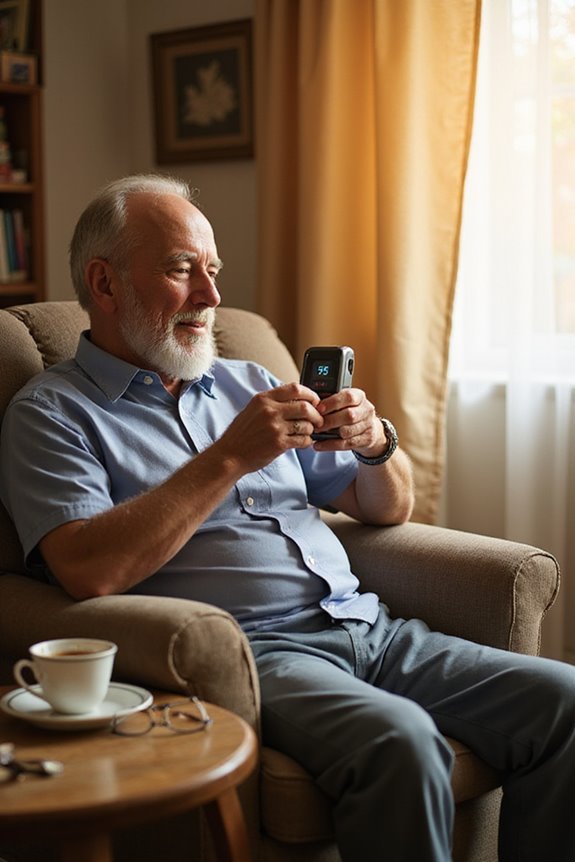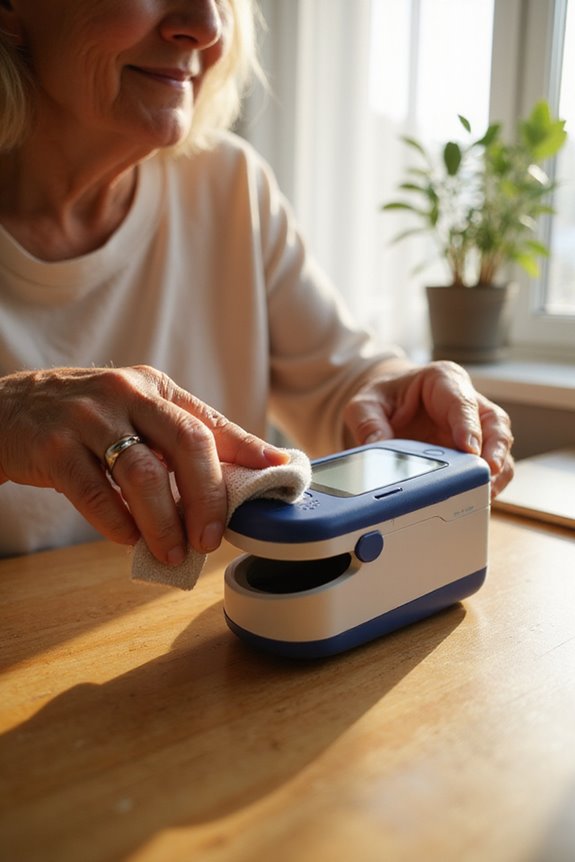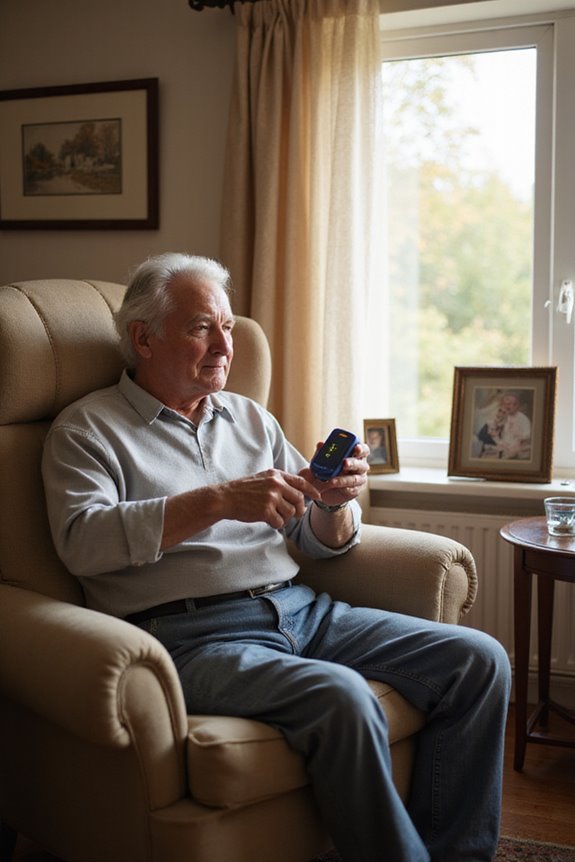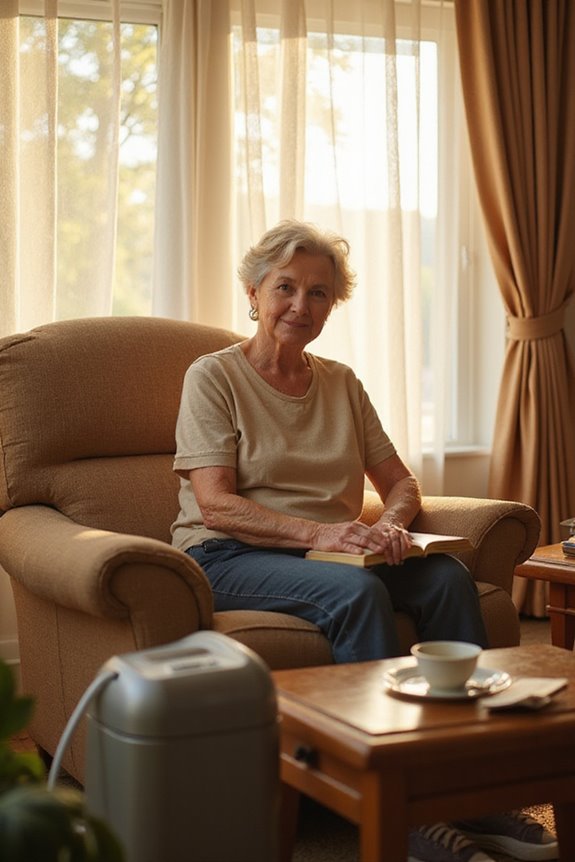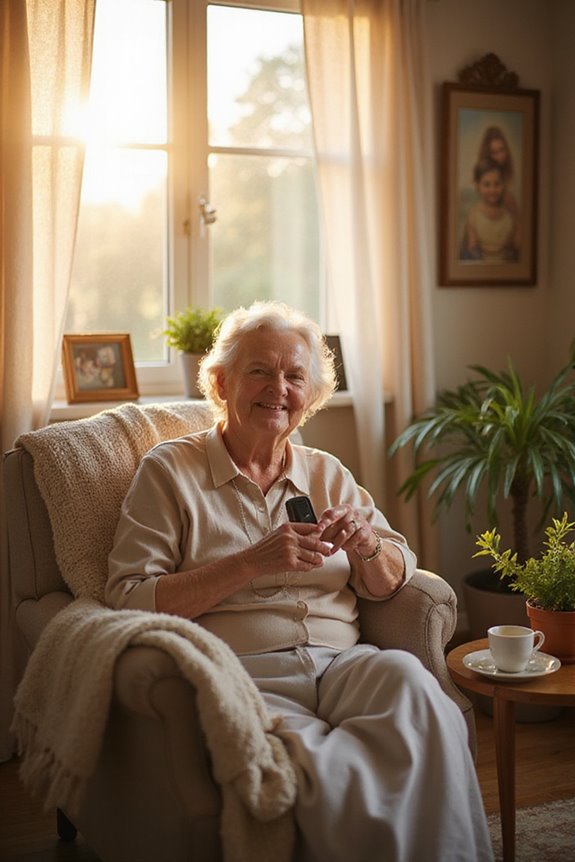For effective home monitoring, the best pulse oximeters provide accurate and noninvasive blood oxygen saturation readings. Key considerations include FDA approval, accuracy of ±2–3%, display features like OLED or LED screens, and ergonomic designs for comfort. Top-rated models, such as the Masimo MightySat Medical and Nonin TruO2 OTC, offer reliability across diverse skin tones. As the market expands, innovations in wearable technology and AI enhance monitoring capabilities. Further insights await on how to select the right device.
Key Takeaways
- Choose FDA-approved models like Masimo MightySat Medical or Nonin TruO2 for accuracy and reliability across skin tones.
- Look for devices with OLED or LED displays for better visibility, especially in low-light conditions.
- Opt for ergonomic designs with comfortable finger clips and padding to enhance user experience during prolonged use.
- Ensure the pulse oximeter has a long battery life and minimal calibration needs for hassle-free monitoring at home.
- Consider models with smart technology for real-time data transmission, enhancing remote health monitoring and telehealth integration.
Overview of Pulse Oximeters
Pulse oximeters are essential medical devices that provide critical insights into a person’s respiratory and circulatory health. Utilizing advanced pulse oximeter technology, these small, clip-like devices measure blood oxygen saturation (SpO₂) and pulse rate quickly and noninvasively.
- They operate by emitting red and infrared light through the skin, analyzing oxygenated versus deoxygenated hemoglobin.
- Readings are displayed digitally, allowing for rapid assessment.
- Commonly employed in clinical settings and for home health monitoring, they are crucial for individuals with respiratory diseases or conditions like COVID-19.
- Health monitoring advancements have made these devices more accessible, with many being lightweight, battery-operated, and affordable. Additionally, choosing a model with real-time data sync can enhance tracking and management of health metrics over time.
Features to Consider When Choosing a Pulse Oximeter
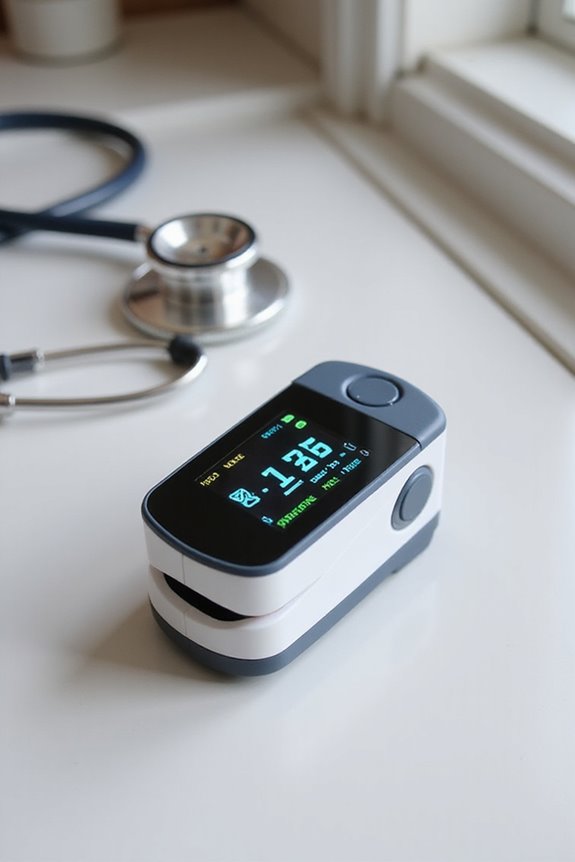
When selecting a pulse oximeter for home use, various features must be considered to guarantee accurate and reliable monitoring. Key considerations include:
- Accuracy and Calibration: Look for medical-grade devices with FDA validation, assuring dependable readings across different skin tones.
- Display and Usability: An OLED or LED display with adjustable brightness and clear numerals enhances visibility and interpretation.
- Comfort and Fit: An ergonomic design with a snug finger clip and soft padding improves comfort during use.
- Power and Durability: Prioritize models with excellent battery longevity, whether using AAA batteries or rechargeable options, to support extended monitoring. Additionally, consider calibration frequency to ensure consistent accuracy over time.
These features collectively assure that users can confidently manage their health at home, promoting a sense of security and well-being.
Top FDA-Approved Pulse Oximeters
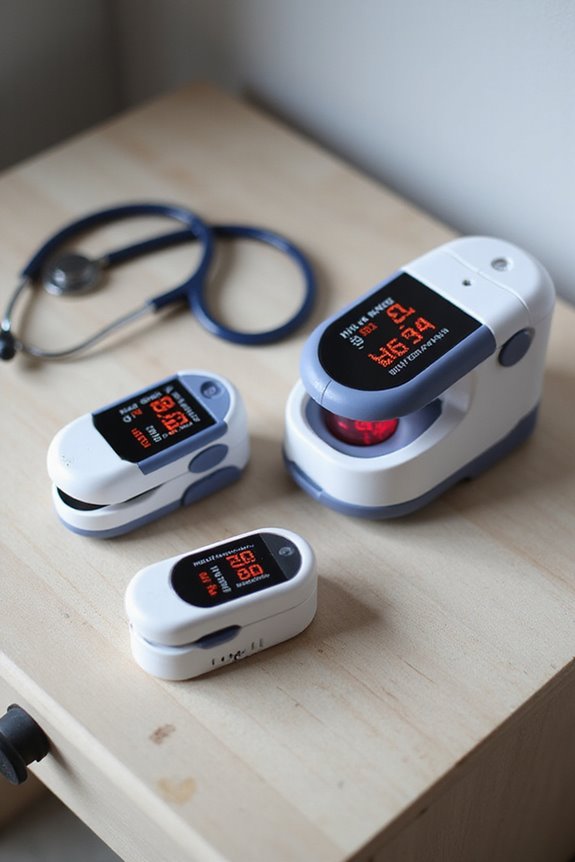
The landscape of home healthcare increasingly includes FDA-approved pulse oximeters, which are essential tools for monitoring oxygen saturation and pulse rate. Two notable devices are:
- Masimo MightySat Medical: The first FDA-cleared fingertip pulse oximeter available over-the-counter, utilizing Masimo SET technology for reliable readings across diverse skin tones.
- Nonin TruO2 OTC: Recently FDA-cleared, it delivers accurate oxygen saturation readings for all skin colors, addressing health disparities.
Both devices hold medical-grade status, ensuring higher reliability and clinical accuracy compared to consumer-grade options. FDA regulations mandate rigorous testing for safety and accuracy, vital for patients with chronic conditions. These advancements not only enhance consumer safety but also reflect a commitment to equitable healthcare practices in pulse oximetry.
Best Pulse Oximeters for Everyday Use
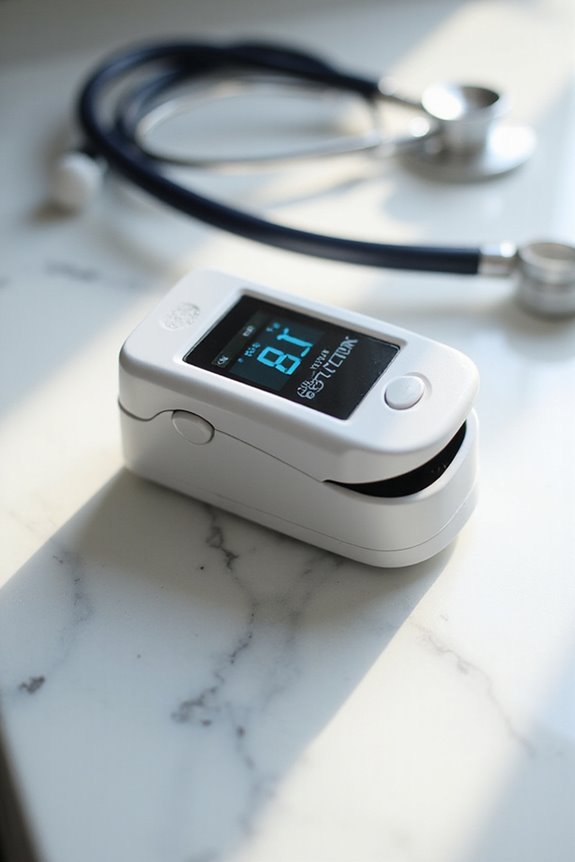
A wide range of pulse oximeters are available for everyday use, catering to individuals seeking to monitor their oxygen saturation and pulse rate conveniently at home. The Oxiline Pulse 9 Pro and Zacurate Pro Series 500DL are popular choices, noted for their accuracy and user-friendly designs.
Key features include:
- Ease of Use: Lightweight and portable, these devices often operate with a single button, minimizing user error.
- Comfort Factors: Designs prioritize comfort, with snug grips and soft padding to accommodate various finger sizes.
- Accessibility: Most models are suitable for adults, seniors, and even children, ensuring broad usability. Additionally, these monitors provide quick readings, typically within 8 to 10 seconds, making them efficient for regular monitoring.
Typically priced under $100, these pulse oximeters provide reliable readings for general wellness monitoring without the complexity of medical devices.
Display Features and User Interface Options
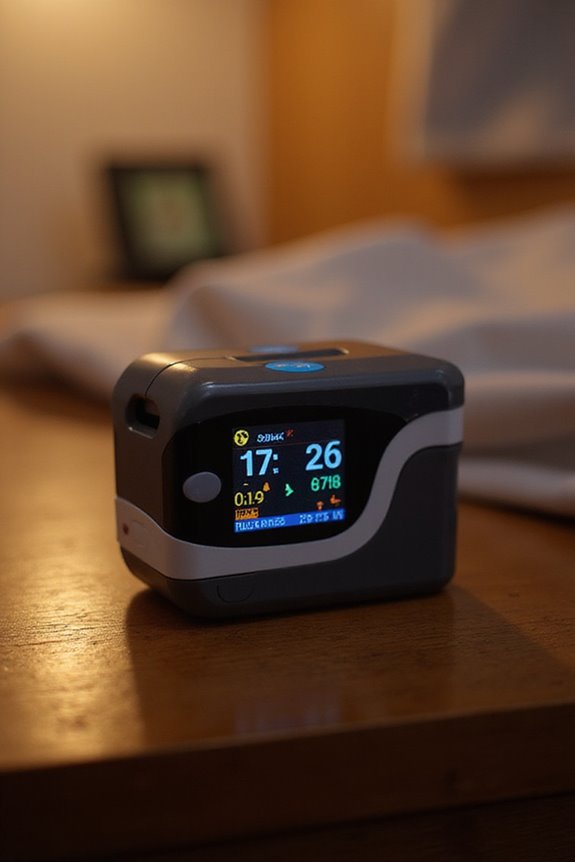
Display features and user interface options are critical components in the functionality of pulse oximeters, influencing usability and overall user experience.
Screen Size and Brightness Levels
- Larger screens enhance readability, especially for users with impaired vision.
- Bright dual-color OLED displays with adjustable brightness (up to 10 levels) improve visibility in various lighting conditions.
- Multi-angle screens facilitate easy viewing without finger adjustments.
Display Modes and Visual Indicators****
- Multiple display modes, including numerical values and waveforms, cater to user preferences.
- Pulse bar graphs and plethysmograph waveforms assist in verifying readings.
- Simple interfaces with clear icons enhance user accessibility across age groups, while larger buttons reduce errors.
These features collectively enhance the functionality and user experience of pulse oximeters, ensuring effective monitoring of health metrics.
Types of Pulse Oximeters Available
Pulse oximeters come in various types, each designed to meet specific user needs and settings.
- Fingertip Oximeters: Commonly used at home, they provide quick readings and are easy to apply.
- Handheld Oximeters: Portable and versatile for different environments.
- Benchtop Oximeters: Found in clinical settings, offering advanced features and higher accuracy.
- Phone-Based Oximeters: Use smartphone apps for estimations, typically less accurate.
- Wearable Oximeters: Often integrated into smartwatches or fitness trackers for continuous monitoring.
- Prescription Oximeters: FDA-reviewed for clinical use.
- Over-the-Counter Oximeters: Available without a prescription for general health tracking.
- Hospital Grade Oximeters: Designed for continuous monitoring in medical environments.
- Multimodal Oximeters: Combine multiple monitoring functions.
Additionally, many fingertip oximeters are designed to provide high accuracy comparable to professional medical devices, ensuring reliable health monitoring at home.
Accuracy and Reliability of Measurements
Accuracy and reliability of measurements in pulse oximeters are critical for effective health monitoring at home.
- Most FDA-cleared devices report measurement accuracy of ±2–3% compared to arterial blood gas oxygen saturation (SaO2).
- Accuracy is highest within SpO2 values of 90–100%, with less reliability below 80%.
- Non-FDA-approved devices may exhibit significant accuracy variations.
- Factors affecting measurement accuracy include poor peripheral circulation, skin pigmentation, and environmental conditions.
- Tobacco use can also compromise device reliability.
To guarantee reliable results, it is recommended to select FDA-cleared pulse oximeters and maintain proper calibration. Awareness of potential biases and limitations is essential, particularly regarding the influence of skin tone on readings, as this can affect clinical decision-making.
Usage Considerations and Best Practices
When considering the effective use of pulse oximeters at home, it is crucial to understand the preparation and procedural nuances that can greatly influence measurement outcomes.
Usage Guidelines
- Verify hands are warm and free of nail polish.
- Rest for five minutes before taking a measurement.
- Select the index or middle finger for best readings.
- Maintain hand at heart level and remain still during measurement.
Measurement Tips
- Turn on the device and secure it on the chosen finger.
- Wait for the reading to stabilize, which may take over a minute.
- Record steady readings; normal SpO2 ranges from 95% to 99%.
- Keep a log of readings for trend analysis and consult a healthcare provider for levels below 94%.
Current Market Trends in Pulse Oximeters
Key market dynamics include:
- Increased demand due to aging populations and rising surgical procedures.
- Consumer preferences leaning towards non-invasive, real-time monitoring solutions.
- Significant market expansion in Asia Pacific, driven by improved healthcare access and rising incomes.
North America retains the largest market share, supported by advanced technology and high chronic disease rates. Innovations, including smartphone integration and portable devices, are enhancing usability and accuracy, aligning with modern healthcare needs and fostering growth across diverse demographics.
Future Innovations in Home Monitoring Devices
The landscape of home monitoring devices is poised for significant transformation, driven by advancements in technology and evolving consumer needs.
AI Advancements and Predictive Analytics****
- AI algorithms will enhance real-time monitoring, detecting early hypoxemia and other conditions.
- Predictive analytics will allow for timely interventions, reducing emergency admissions.
Wearable Technology and Non-Invasive Devices
- Smartwatches and health trackers will increasingly incorporate pulse oximetry.
- Non-invasive devices, such as NASA’s Cardi/o monitor, will enable remote essential sign detection.
Telehealth Integration and Smart Home Solutions****
- Real-time data transmission will support virtual consultations, improving patient care.
- Smart home systems will facilitate ambient monitoring, triggering alerts for abnormal readings.
Personalized Care Strategies
– Extensive health data will enable tailored care plans, enhancing patient engagement. Additionally, the incorporation of measurement accuracy in these devices will ensure reliable health monitoring and timely responses to potential health issues.
Frequently Asked Questions
How Do I Properly Clean My Pulse Oximeter?
In the domain of health, meticulous cleaning techniques are essential. To guarantee longevity, maintenance tips suggest using gentle wipes, avoiding excess liquid, and allowing thorough drying—keeping the pulse oximeter pristine for consistent, reliable use in caring hands.
Can Pulse Oximeters Be Used for Children?
Pulse oximeters can be used for children, but ensuring child safety is essential. Pediatric use necessitates devices designed specifically for younger patients, enhancing accuracy and reducing stress during monitoring, ultimately fostering a sense of security for families.
What Is the Battery Life of a Typical Pulse Oximeter?
Battery life of pulse oximeters varies greatly; handheld models boast up to 160 hours while consumer versions typically last around 30 hours. Usage frequency and battery type profoundly influence performance and longevity, shaping user experience.
How Often Should I Calibrate My Pulse Oximeter?
Calibration frequency for pulse oximeters is typically unnecessary for home users, as accuracy maintenance relies more on proper usage and device condition. Factory calibration guarantees reliability, so regular recalibration is generally not required.
Are There Any Side Effects of Using a Pulse Oximeter?
The potential side effects of using a pulse oximeter include skin irritation and discomfort, which can impact user experience. Accuracy can be compromised by external factors, making awareness of limitations essential for effective monitoring and interpretation.

